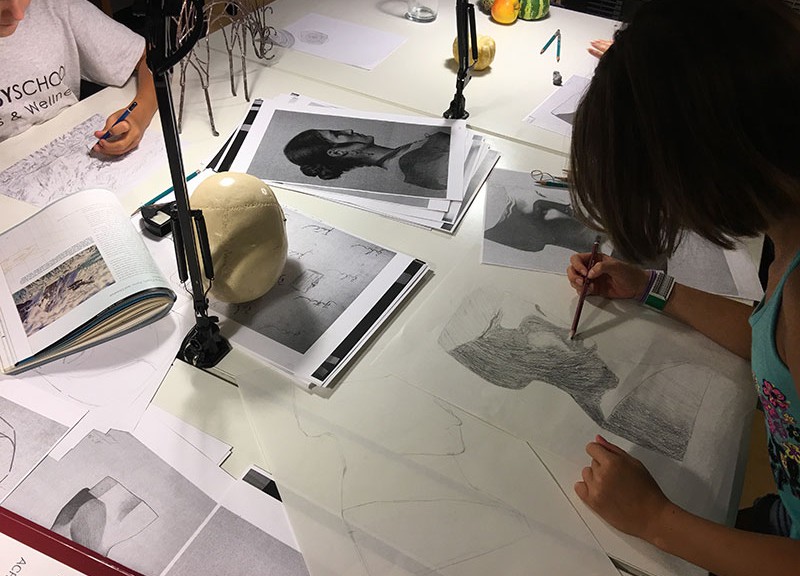Much is written about the obvious connection between seeing and drawing. A lot of my time spent with students concerns training their sense of sight. Consistency in vision is an essential component in learning to draw. But what if there is another sense that is equally important in guiding you while drawing from observation?
According to the classic book The Practice and Science of Drawing by Harold Speed, even though we project what we see onto the retinas of our eyes, they do “not suffice to account for our knowledge of the solidity and shape of the objective world, were these senses not associated with another sense all important in ideas of form, the sense of touch.”

In fact, as infants, our sense of touch is already highly developed. “Our survival depends so much on this sense of touch, that it is of the first importance to us,” states Speed. If you have ever watched the clumsy little hands of a baby reaching for a shiny object beyond eye’s focus, you get Speed’s point.
“And when he has at last got hold of it, how eagerly he feels it all over, looking intently at it all the time; thus learning early to associate the “feel of an object” with its appearance. In this way by degrees he acquires those ideas of roughness and smoothness, hardness and softness, solidity, etc., which later on he will be able to distinguish by vision alone, and without touching the object.”

Drawing the smooth dimensional form of a hand holding a ball, as shown above, can be tricky. Your eyes guide you through the challenges of sketching lines that place the subject on the page and measure proportions. But they can have a difficult time seeing around the surface masses of objects. This is where your childhood sense of touch comes to the rescue.

By engaging your sense of touch, the drawing instrument becomes an extension of your fingers. You can “feel” your way across the surface of a ball or an apple—as if to “trace” around the edges of your subject with your fingertips. With practice you’ll be able to gain a sense of depth in your drawing, and even how the surfaces on the unseen side of your subject could be formed.




“Sight is therefore not a matter of the eye alone. A whole train of associations connected with the objective world is set going in the mind when rays of light strike the retina refracted from objects. And these associations vary enormously in quantity and value with different individuals,” wrote Harold Speed.
So, the next time you have an apple in your hand, spend a moment to feel it’s smooth, curved mass with your fingertips. Take a big juicy bite out of it and set it on a table in front of you. Then turn up your favorite music, and start drawing with all of your senses.
Some photos of students engaging all their senses as they drew various subjects last week…





Rob Court
Latest posts by Rob Court (see all)
- Drawing With Friends - April 11, 2022
- Frozen in Time: Cellphone Users as Models to Draw - April 8, 2022
- Getting Out & Getting Real - June 20, 2021
- Life Lines: Sketching the Unseen World of Movement - June 20, 2021
- The Ups & Downs of Urban Sketching - May 9, 2021
